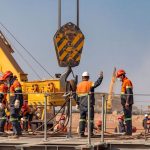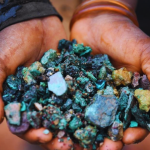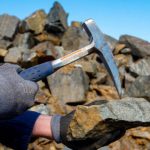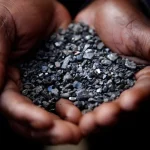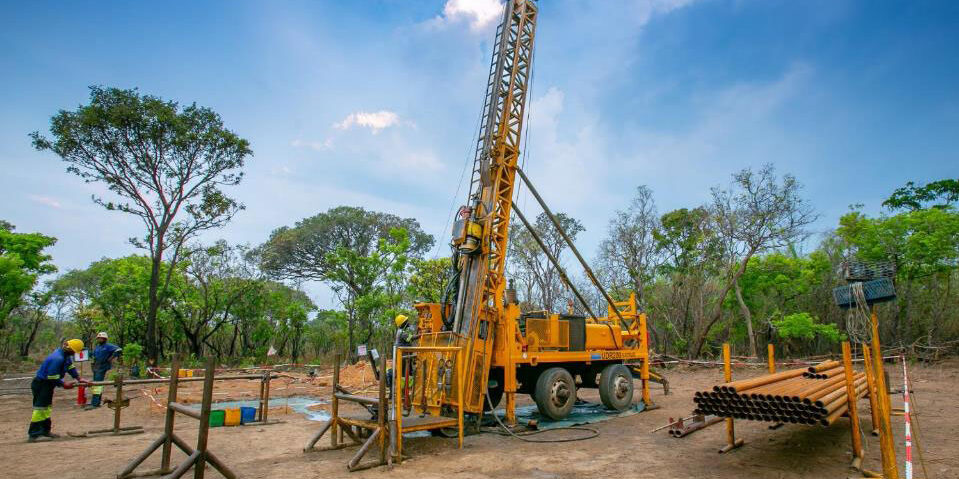Is it likely that more major copper deposits will be found in the Domes region of north-west Zambia? The answer is a resounding ‘yes’ if one speaks to NICK VON SCHIRNDING, Executive Chairman of junior explorer Arc Minerals.
As he explains to contributing editor ARTHUR TASSELL, the area is currently one of the most prospective in the world for copper – in fact, it is now attracting the attention of several mining majors.
AIM-listed Arc has a prime landholding in the Domes region with its licences extending over an area of around 870 km2, all located on the western side of the Kabompo Dome, which is the western-most dome of the Domes region.
What excites von Schirnding is the fact that just 40 km to the east of Arc’s ground, on the eastern edge of the Kabompo Dome, First Quantum Minerals’ (FQM) Sentinel mine produced 233 kt of copper in 2021, making it Africa’s biggest copper mine. Sentinel has a current resource of over 800 Mt at 0.45% Cu.
“Not only do we have the Sentinel mine in relatively close proximity to our licence area but also First Quantum’s Enterprise nickel mine, currently under development; while further to the east are Barrick’s Lumwana mine and First Quantum’s Kansanshi mine, which is another huge copper mining operation,” says von Schirnding.
Copper: Zambia the best option
Since taking over as CEO of Arc in 2017 (when it was still known as Ortac), von Schirnding has totally transformed the company.
“When I came aboard, the company’s main assets were gold projects in the DRC and Slovakia as well as an indirect interest in the current Zambian licences,” he says. “I made the decision that we needed to focus on just a single asset and my assessment was that the Zambian licences offered the most ‘blue sky’.
“We first sold off the Slovakian gold project and then later our DRC interests, which were housed in a company called Casa Mining. In parallel with these moves, we increased our interests in the two Zambian companies, Zamsort and Zaco, which held the Zambian licences.
“The result was that we became a totally focused Zambian company, although more recently we have diversified into Botswana.” Arc’s exploration of its Zambian ground began in earnest in mid-2018, with the launch of a 11 000 m RC and diamond drill programme. Since then, there has been further drilling (the total now stands at around 22 000 m) with this being supplemented by airborne geophysical surveys (10 700 km have been flown), as well as extensive soil sampling (with around 75 000 soil samples having been collected and analysed).
The company also ran a small-scale demonstration plant on site for a time to treat near-surface oxide materials and completed a positive ‘Proof of Concept’ study which examined the mining, extraction, and processing methods for two deposits within the licence areas.
“In all, we’ve invested about US$15 million in our Zambian exploration activities,” says von Schirnding. “Our strategy has been to assess our overall landholding rather than focusing on a single target and we have therefore not progressed to the resource stage.
The results we’ve had have been very encouraging indeed and virtually every hole we’ve drilled has hit copper mineralisation – mainly oxides – in one form or another, and sometimes cobalt as well. Intersections have included 39 m at 1.47% Cu and 7.6 m at 4.15% Cu, which are exceptional for the area.”
He points out that the areas Arc has under licence were previously explored in the 1990s by an Anglo American/Equinox Minerals joint venture known as the Zambezi JV and that nine of the 30 top-ranked targets identified by the JV, including the top seven ranked targets, are located within Arc’s licence areas. As an aside, he notes that Kalumbila – the sediment-hosted deposit that now underpins the mighty Sentinel mine – only ranked at 22 in the list of the top 30 targets.
Kalumbila entered the FQM fold in 2010 when the company concluded a deal to purchase junior explorer Kiwara, a company run by mining entrepreneur and explorationist Colin Bird (who is, incidentally, executive chairman of African Pioneer, among other current roles). As part of the US$260 million deal, FQM also acquired the Kawako nickel deposit, which it is now developing as the Enterprise nickel mine.
Interest from big players
The results generated by Arc have been sufficiently positive to persuade Anglo American (Anglo), which departed Zambia in 2000, to sign a joint venture agreement with the company in May last year in respect of the Zambian licences. In terms of the deal, which is yet to be completed, Anglo could ultimately own 70% of the licences by investing US$88.5 million over three stages.
The parties are currently closing out remaining due diligence, technical and structure issues which are expected to be concluded in the next few weeks (which means that the deal could be concluded by the time this article is in print).
“Assuming the deal does go through, it will represent a turning point for Arc,” says von Schirnding. “The partnership with Anglo would mean that the project would benefit from an intensive exploration effort of a type which would frankly stretch Arc’s resources to the limit if we were to try to conduct it ourselves, given the extent of our landholding.
“Anglo has the resources and expertise to find commercial-size deposits in the licence areas if they are there to be found – as we think they are. It knows the ground well from the days of the Zambezi JV and has huge expertise in-house on the geology of the Domes region.”
Von Schirnding says that while the proposed deal would give Anglo control of the project, Arc would retain a sizeable interest through its 30% share in the JV. “This is a very positive outcome for both Arc and its shareholders and compares very well with other recent deals negotiated between majors and juniors in respect of copper projects,” he says.
Von Schirnding says that Anglo was not the only major to approach Arc. “Prior to the Anglo deal being signed, we were approached by three other majors but ultimately Anglo offered the best terms.”
Commenting on the Zambian mining scene, von Schirnding notes that the mining sector has been re-energised, with the administration of President Hakainde Hichilema having mended previously fractured relations between mining companies and the state.
This has led to several companies announcing investments in the country’s mining industry, most notably FQM, which has committed US$1.35 billion to an expansion of its Kansanshi mine and the development of Enterprise.
“We’ve also seen a major reform of the country’s mining Cadastre system, which makes it more efficient and transparent, and this is a development which is very welcome and makes Zambia even more attractive as an investment destination,” he says.
If Anglo does take control of the Zambian licences, Arc will still remain an active exploration company as it holds 75% of the Virgo project in Botswana, which it acquired from Kopore Metals in late 2021.
The project is located just 10 km to the south-east of the new Zone 5 underground copper/silver mine of Khoemacau Copper Mining and covers a total area of 210 km2. Arc has already started drilling on the project.
“Virgo is located in one of the newest emerging copper districts in the world,” says von Schirnding. “Not only does the Kalahari Copperbelt area host the Khoemacau mine, but also the Motheo open-pit mine of Sandfire Resources. It is still early days and at this point we are still in the very early stages of exploration, but we are confident that we are in the right area for a copper discovery. In short, we are very excited by Virgo’s potential.”

